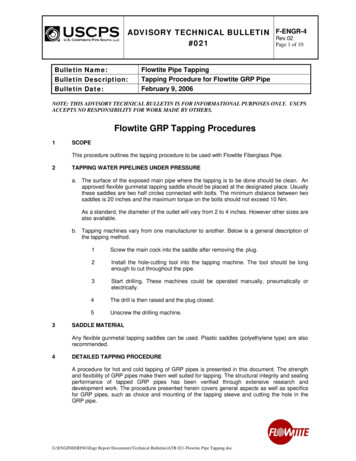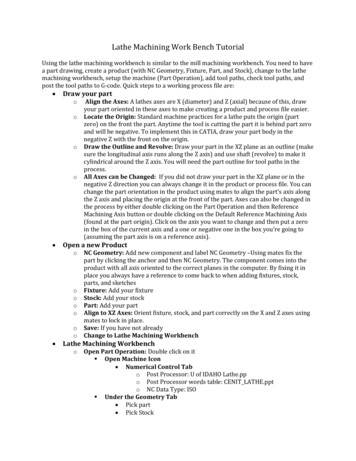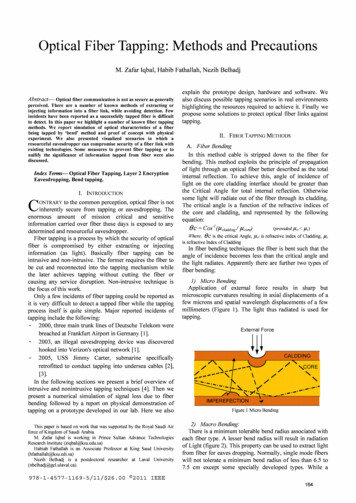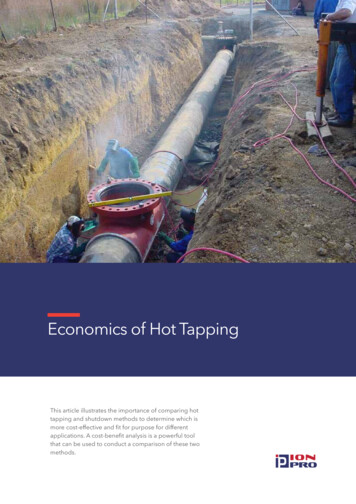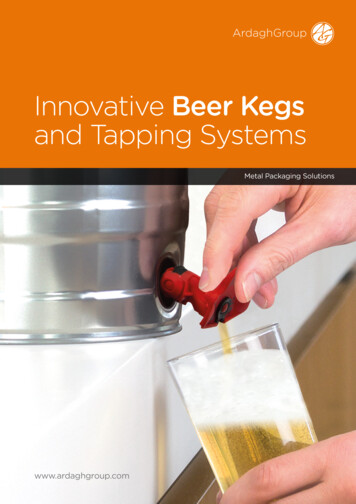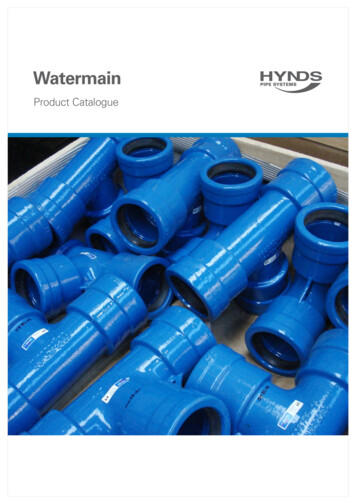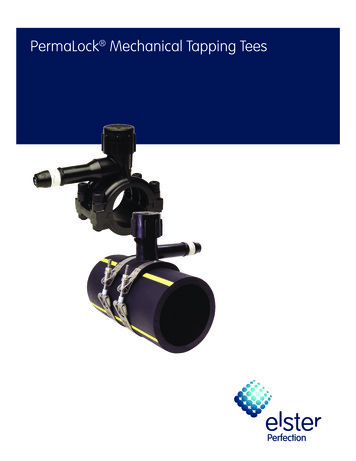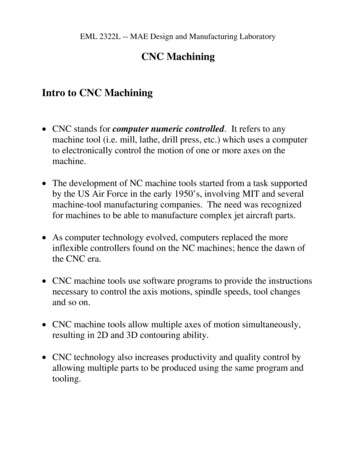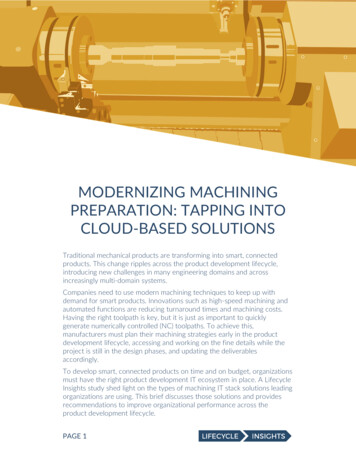
Transcription
MODERNIZING MACHINING PREPARATION: TAPPING INTO CLOUDBASED SOLUTIONSMODERNIZING MACHININGPREPARATION: TAPPING INTOCLOUD-BASED SOLUTIONSTraditional mechanical products are transforming into smart, connectedproducts. This change ripples across the product development lifecycle,introducing new challenges in many engineering domains and acrossincreasingly multi-domain systems.Companies need to use modern machining techniques to keep up withdemand for smart products. Innovations such as high-speed machining andautomated functions are reducing turnaround times and machining costs.Having the right toolpath is key, but it is just as important to quicklygenerate numerically controlled (NC) toolpaths. To achieve this,manufacturers must plan their machining strategies early in the productdevelopment lifecycle, accessing and working on the fine details while theproject is still in the design phases, and updating the deliverablesaccordingly.To develop smart, connected products on time and on budget, organizationsmust have the right product development IT ecosystem in place. A LifecycleInsights study shed light on the types of machining IT stack solutions leadingorganizations are using. This brief discusses those solutions and providesrecommendations to improve organizational performance across theproduct development lifecycle.PAGE 1
MODERNIZING MACHINING PREPARATION: TAPPING INTO CLOUDBASED SOLUTIONSAPPROACHES THAT DELIVER VALUELifecycle Insights’ 2020 Product Development IT Ecosystem Studyinvestigated the impact of employing more progressive IT ecosystems inplace of established ones, including those for machining strategies.The Lifecycle Insights’ benchmarking method categorized the respondentsinto three groups of equal size. Each organization is ranked as either mostprogressive, moderately progressive, or least progressive, according to thetypes of solutions in its product development IT ecosystem. Whencomparing these different organizations, the report revealed significantdifferences in the number of product-level prototypes built and tested,change orders executed after design release, and electronics respins. Intotal, the most progressive companies saved more than 1,038,000 per yearcompared to the least progressive.Machining solutions play a critical role in the development process. Thestudy found that the most progressive organizations use a more diverse mixof solutions than their less progressive counterparts. They employ cloudbased solutions at a higher rate than the other respondent groups, but theseare not the only solutions they use. The most progressive organizationscommonly use file-based, locally installed applications as well. They also useapplications connected to on-premise servers. The most progressivecompanies are not replacing traditional solution types altogether. They aresimply augmenting them with cloud-based solutions.AUGMENTING TOOLPATH GENERATIONWITH CLOUD SOLUTIONSThe study cohorts are clearly differentiated by the mix of traditional versuscloud-based applications they employ for the machining IT stack. Thegroups diverge further in their approaches to design release, the handofffrom engineering to manufacturing. Once the machinists receive thedesigns, they can develop the relevant tooling and machining solutions.Traditionally, design models are exported and imported into computer-aidedmanufacturing (CAM) solutions. However, this strategy is fraught withissues. The translation between different solutions often results in brokengeometries, and machinists must spend hours fixing the resulting models.When any change is made to the design, the whole process must berepeated. The necessary fixes can be costly both in terms of money andproduct development delays. This places pressure on both the projectbudget and deadlines.PAGE 2
MODERNIZING MACHINING PREPARATION: TAPPING INTO CLOUDBASED SOLUTIONSThe study revealed that the most progressive organizations mitigatetranslation issues between applications by using cloud-based solutions.Some 64% of the most progressive companies open mechanical designmodels using an integrated cloud solution. The same proportion open nativefiles using an integrated suite. These solutions provide a smooth transitionbetween the design and manufacturing stages. The design models do notneed to be exported and imported across multiple CAD and CAM solutions,eliminating transition-related geometry errors.Figure 1: Integration Approaches to Mechanical and Machining - The mostprogressive use cloud-based solutions to share mechanical designs withmachinists developing manufacturing models and numerically controlledtoolpaths. Lifecycle Insights’ 2020 Product Development IT Ecosystem StudyThere are many benefits to this strategy. Cloud-based solutions enableseamless late-stage changes. What’s more, machinists can complete prepwork earlier in the development lifecycle, even before design release. Theseintegrated solutions allow companies to resolve issues as early as possible inthe product development lifecycle, saving time and money. And thanks tothe highly scalable nature of the cloud, organizations can deploy additionalcompute resources to keep pace with the demands of their computationallyintensive machining models.PAGE 3
MODERNIZING MACHINING PREPARATION: TAPPING INTO CLOUDBASED SOLUTIONSEMPLOYING CLOUD-BASED SOLUTIONSFOR COLLABORATIONMachining is growing in complexity, increasing manufacturing times. Highspeed machining can help, improving organizations’ manufacturing efficiencyand throughput levels.Figure 2: Approaches to Sharing Machining Models - The most progressive usecloud-based solutions to share and collaborate on machining models withsuppliers, customers, and partners. Lifecycle Insights’ 2020 ProductDevelopment IT Ecosystem StudyWhen implementing high-speed machining, companies must ensure thereare no clashes with other equipment that could lead to catastrophic damageon the factory floor. To achieve this, machinists must verify their toolpathswith simulations of the high-speed machining equipment at work. Thisallows them to predict, catch, and resolve clashes virtually before they everget to the manufacturing floor.Unfortunately, traditional file-based workflows work against these newapproaches. They introduce time lags as files are transferred from oneapplication to another. What should be a fast verification of a toolpath turnsinto days of waiting. In contrast, cloud-based technologies allow for aPAGE 4
MODERNIZING MACHINING PREPARATION: TAPPING INTO CLOUDBASED SOLUTIONSseamless workflow in which machinists can easily develop, simulate, andverify high-speed toolpaths.RECOMMENDATIONS Companies should determine the monetary and time impact ofworking on out-of-date information when creating machiningtoolpaths. How frequently do change orders result in scrap andrework on the production floor? Companies should augment existing CAM applications with cloudsolutions that enable sharing and collaboration with others in thedevelopment process. They should make sure to select solutions thatsynchronize and do not duplicate models and files.Chad Jackson leads Lifecycle Insights’ research and thought leadershipprograms, attends and speaks at industry events, and reviews emergingtechnology solutions.Lifecycle Insights is a research and advisory publishing firm. Our mission is tohelp executives reap more value from tech-led initiatives without disruption.The entire contents of this publication are copyrighted by Lifecycle Insightsand may not be distributed, reproduced, archived, or transmitted in any way,shape, or form without prior written consent by Lifecycle Insights.EMAIL - contact@lifecycleinsights.comPAGE 5SITE - www.lifecycleinsights.com
MODERNIZING MACHINING PREPARATION: TAPPING INTO CLOUD-BASED SOLUTIONS . PAGE 3 The study revealed that the most progressive organizations mitigate translation issues between applications by using cloud-based solutions. Some 64% of the most progressive companies open mec
